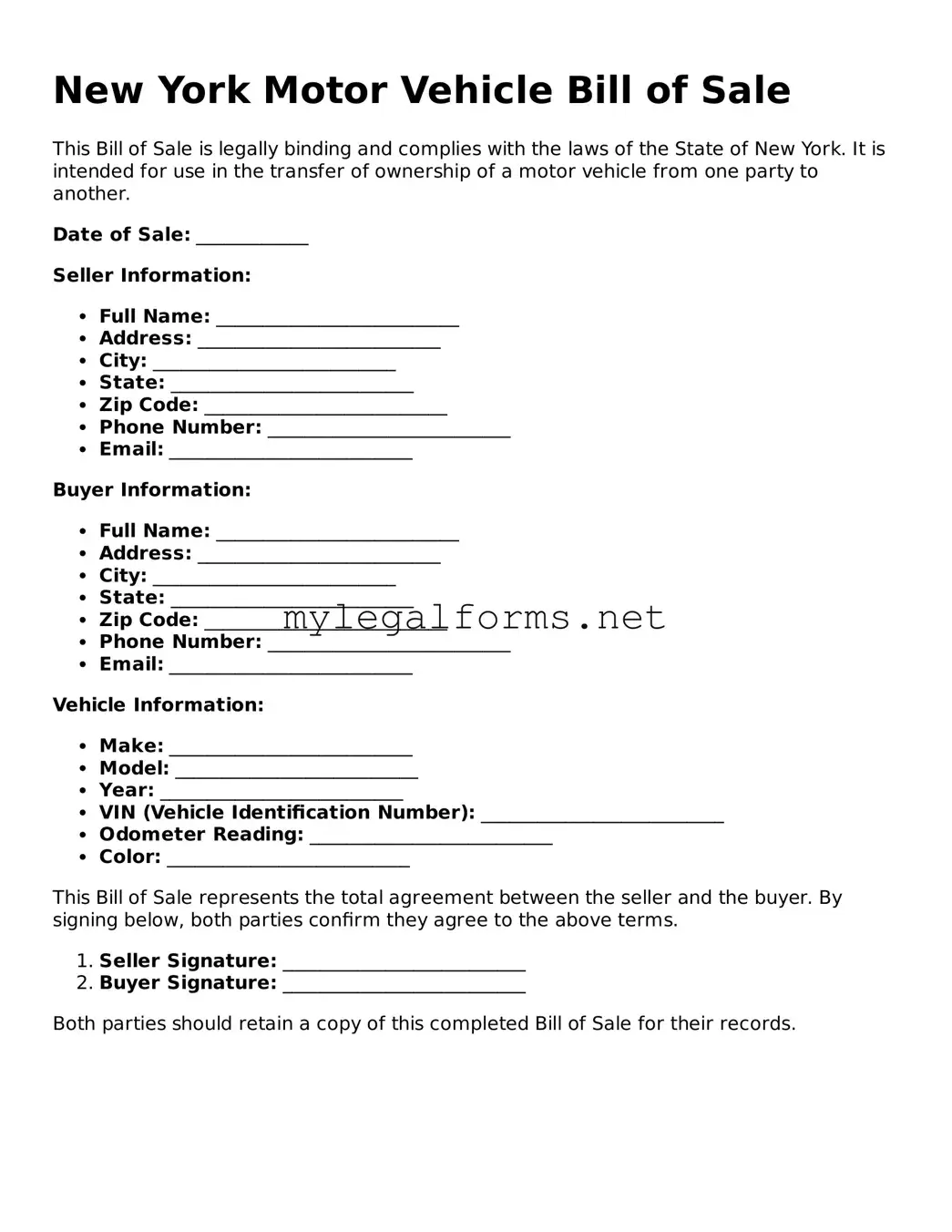Completing the New York Motor Vehicle Bill of Sale form is an important step in the vehicle transfer process. However, several common mistakes can lead to complications. One frequent error is failing to provide accurate information about the vehicle. This includes the Vehicle Identification Number (VIN), make, model, and year. If any of this information is incorrect, it can create issues with registration and ownership.
Another mistake is neglecting to include the purchase price. The form requires a clear statement of the amount paid for the vehicle. Omitting this detail can lead to misunderstandings between the buyer and seller and may complicate tax assessments.
Many individuals overlook the importance of signatures. Both the buyer and seller must sign the form to validate the transaction. Without these signatures, the document may be considered incomplete, and the transfer of ownership could be challenged.
Inaccurate dates can also pose a problem. It is essential to record the date of the sale correctly. An incorrect date may raise questions about the timing of the transaction, potentially affecting tax obligations and vehicle registration.
Another common error is not providing the correct odometer reading. This reading must be included to confirm the vehicle's mileage at the time of sale. Failing to document this can lead to disputes regarding the vehicle's condition and value.
Some people forget to check for any liens on the vehicle. If the vehicle has an outstanding lien, it is crucial to address this before completing the sale. Ignoring this step can lead to legal complications for the new owner.
Individuals often fail to keep a copy of the completed Bill of Sale. This document serves as proof of the transaction and should be retained for future reference. Without a copy, both parties may face difficulties if questions arise later.
Additionally, buyers and sellers sometimes neglect to review the form for errors before submission. Simple mistakes can be easily overlooked, but taking a moment to double-check the information can save time and prevent future issues.
Finally, not understanding the implications of the Bill of Sale can lead to confusion. This document is not just a formality; it signifies the transfer of ownership and the responsibilities that come with it. Being informed about these implications is essential for both parties involved.
